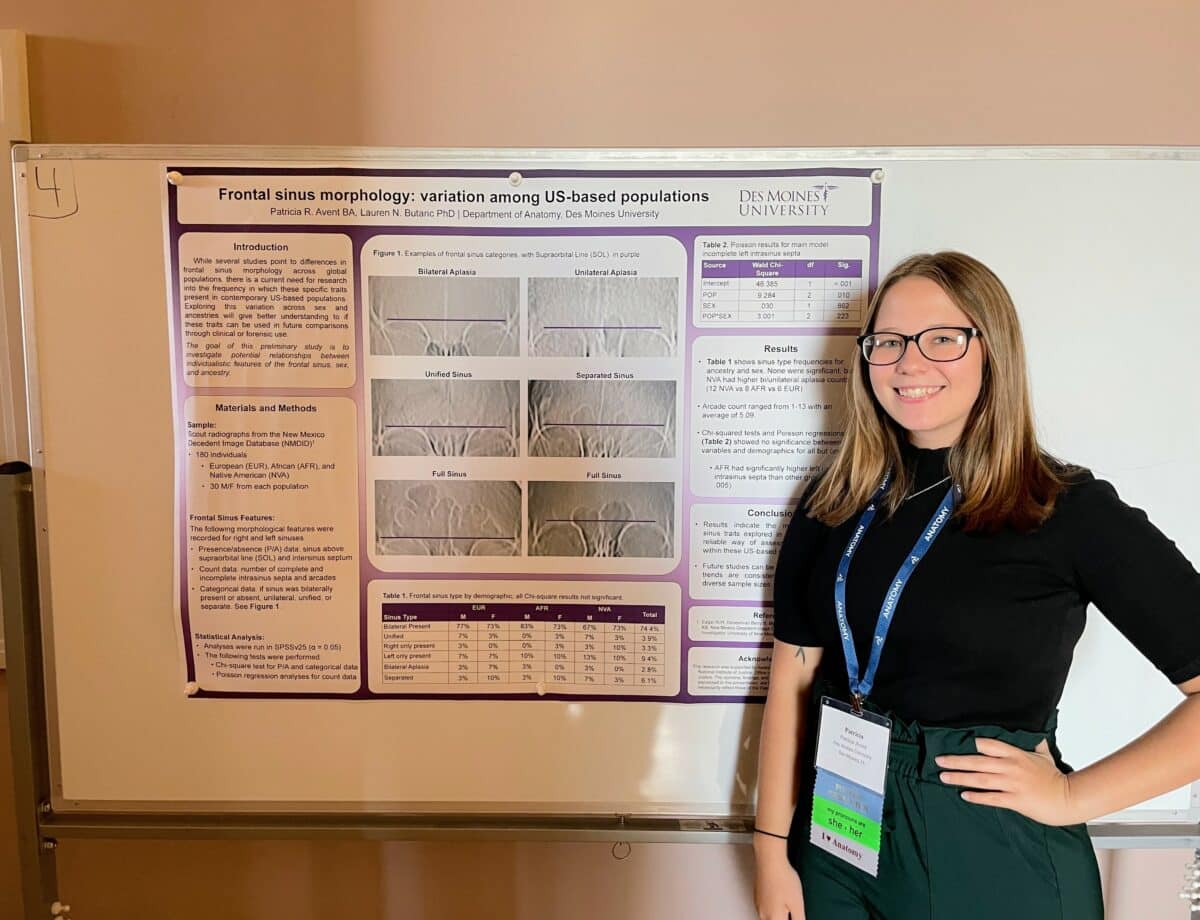When the American Association for Anatomy held its regional meeting, “Anatomy Across Scales: from Molecules to Organisms,” in Iowa City – just two hours from Des Moines – in October, it was a no-brainer for a group of DMU anatomy students to attend. Led by anatomy lab specialist Ariel Gubatina, M.S., 12 students carpooled for the opportunity to soak up knowledge on topics ranging from lung epithelial stem cells and regeneration to 3D printing in neuroanatomy and careers in the field.
“It’s beneficial for students to find out what’s happening in anatomy and careers in anatomy that aren’t directly in health care,” Ariel says. “There were discussions and discourse during the conference as well as during the car ride.”

In the DMU group were two students who are dual-enrolled in the University’s master of anatomy (M.S.A.) program and a clinical program; seven first- and second-year M.S.A. students in the program’s teaching track; and three second-year students in its thesis track. That mix sparked diverse conversations among the group, Ariel says.
Tricia Avent, M.S.A.’26, presented a research poster during the meeting, titled “Frontal Sinus Morphology: Variation Among US-Based Populations.” As an undergraduate at the University of Illinois-Champaign, she worked on her undergraduate thesis with Heather Garvin, Ph.D., D-ABFA, professor of anatomy; with a goal of building on her research experiences for her anatomy master’s degree, she chose DMU’s program and its thesis track given her connection to Dr. Garvin, her interest in forensic anthropology and the close interactions its students have with faculty.

“I like the idea of a smaller program. The anatomy department is so welcoming,” Tricia says. “Everyone is curious; even the faculty not on my thesis committee are interested in my research.”
The students who attended the regional meeting agree they benefited from the informative talks as well as the interactions.
“The main reason I attended was so I could engage with other students and professionals who have a similar interest to mine and learn from them all,” says Mufeed Kamal, M.S., M.S.A.’27. “I wanted to network with other professors in the field to learn more about getting my Ph.D., talk to other students who are on a similar academic pathway as I am to see if there is additional work I should do, and look at research posters to increase my knowledge by learning more about up-to-date research.”
He says attending the conference was an “incredible” experience.
“I had an amazing time with the group I went with from DMU and the people I met at the conference. I had highly engaging conversations with many people on various career tracks in science,” Mufeed says. “There were different discussion rooms that leaned more toward career-focused talks, and talks about the teaching aspect of anatomy, research and industry-related careers. I learned there is a lot more to getting a degree in anatomy than I had first thought. The world is your oyster the minute you step into this field, as there are many pathways you can take with even just a bachelor’s.”

